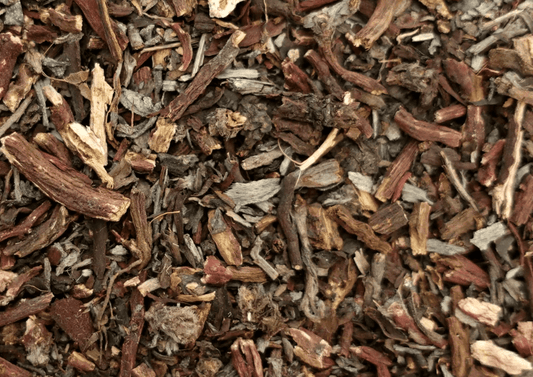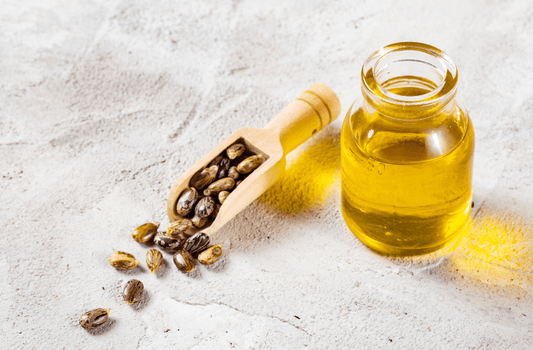White sand, turquoise seas and the scent of coconut. Sounds like the perfect day!
We might not all be able to hop on a plane to a tropical island, but we can help bring a little tropical vibe to your bathroom this summer with our hot process coconut milk soap recipe!
This recipe creates a nice hard bar of soap with a creamy lather, our makers loved it!
What Is Hot Process Soap Making?
Hot process soap making is a method of heating up the soap mixture after the oils and lye have been mixed. This speeds up the saponification process, which is the chemical reaction that turns the ingredients into soap.
Can Beginners Try Hot Process Soap Making?
Hot process soap making is great for beginners as it is actually more forgiving than cold process soap making. As the heat ensures that the soap is fully saponified it means that it can be used much sooner than cold process soap, although it is still best to leave it 4-6 weeks to cure.
If you're looking for the ultimate beginner hot process soap recipe, try our pure coconut oil soap recipe here
The bars will look a little more rustic than cold process soap though, but that just adds to the natural, tropical vibes of this recipe.
We also provide silicone soap moulds to help produce a cleaner finished look!
Keeping It Safe
Don't be tempted to skip the gloves and goggles when you're making hot process soap. Sodium hydroxide needs to be handled with caution.
Work in a well ventilated area when you're mixing the sodium hydroxide with water.
Your soap will not be skin safe until a few days after you've made it, so wear gloves throughout the process.
Hot process soap can boil over if it gets too hot, so make sure that your oils are below 60C and your sodium solution is below 30C before you mix them.
Equipment:
- Gloves
- Goggles
- Weighing scales
- 3.5 litre slow cooker
- A 1200g soap mould, or homemade alternative
- 2x 1L plastic jugs
- Silicone or stainless steel mixing spoon
- Digital thermometer
Ingredients:
- Olive oil 400g | 439ml
- Cocoa butter 120g
- Coconut oil 280g
- Rosehip oil 40g | 44ml
- Coconut milk 264g
- Sodium hydroxide 121g
- Spearmint essential oil 1g | 1ml
- Peppermint essential oil 11g | 12ml
- Lime essential oil 12g | 15ml
Makes 9-10 bars of soap
Takes 1 hour making time and 4-6 weeks curing time
This recipe uses a 5% superfat of rosehip oil, plus the extra fat in the coconut milk, to make your homemade soap wonderfully moisturising
Method:

1. Freeze the coconut milk into cubes
- Weigh the coconut milk
- Pour into an ice cube tray
- Put into the freezer until frozen

2. Mix the sodium hydroxide solution
- Put your gloves and goggles on
- Weigh the sodium hydroxide
- Add a quarter of the sodium hydroxide to the frozen coconut milk
- Mix well, and leave it to cool for a few minutes
- If it is below 20C, add another quarter of the sodium hydroxide. If not, let it cool down more.
- Repeat until all the sodium hydroxide is mixed into the coconut milk.
- If you rush these steps, you'll scorch the coconut milk and it will smell unpleasant.
- Leave to cool

3. Weigh and heat the oils
- Turn your slow cooker on to high heat
- Weigh the olive oil, coconut oil and cocoa butter
- Add them to your slow cooker
- Heat until melted, but below 60C
- Mix well

4. Check the temperatures
- Test the temperature of the oils, they should be below 65C.
- Leave to cool if necessary.
- Switch the slow cooker on to low heat.
- Test the temperature of the sodium hydroxide solution, it should be below 30C.
- Leave to cool if necessary.

5. Blend until trace
- Add the sodium hydroxide solution to the oils in your slow cooker.
- Mix with the stick blender then blend using short pulses.
- Test for trace by dripping soap batter across the surface of the mixture.
- It has reached trace when the drips sit on the surface before disappearing.
- Stop blending when your soap has reached trace.

6. Cook
- Cook on a low heat for 30-60 minutes with the lid closed.
- You don't need to stir it.
- If the soap still has an opaque centre area, it needs to be cooked more.
- The soap is done when it is translucent, like Vaseline.
- When it is done, remove the pot from your slow cooker.
- Stir it, but try not to push any crispy bits into the soap.
- Allow to cool until it is below 80C.
7. Add essential oils and superfat
- Weigh the essential oils and rosehip oil.
- Stir into the soap mixture.
- Mix well until combined.

8. Pour into moulds
- Pour or scoop your soap mixture into moulds
- Gently tap the mould on a surface to get rid of any trapped air bubbles
- Leave for 24 - 48 hours

9. Leave to cure
- Unmould them, cut into bars if necessary
- They won't look smooth and polished. Hot process soap has a rustic, handmade soap look and feel.
- Leave to cure for 4-6 weeks. You can use hot process soap after a few days, but it lathers better and lasts longer if you let it cure.
Continue Reading
Want to keep those holiday vibes coming this summer? Try our other holiday inspired recipes:
- Feeling hot? Our Aloe Vera After-Sun Recipe will keep skin cool and hydrated after a day in the sun.
- Interested in more hot process soap recipes? Why not bring some Greek island joy to your bathroom with our Hot Process Olive Oil Soap recipe.
- Tried cold process soap making? Bring the scent of Provence to your home with our Lavender Cold Process Soap Recipe.
How did your coconut milk soap come out? Comment below and let us know.



